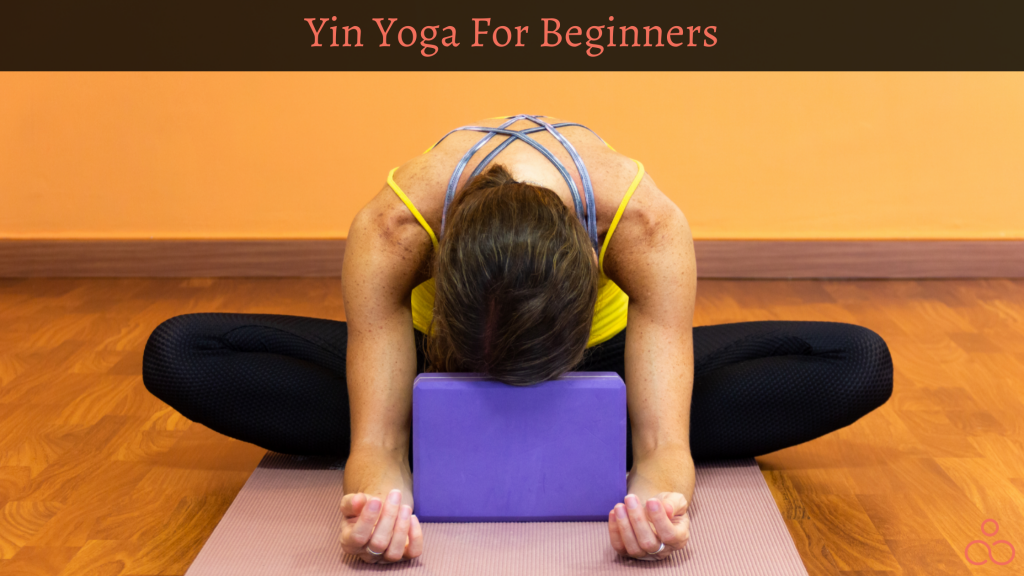When you are first starting yoga, it may be difficult to find what type of practice would be best for you. Unclear explanations and the overwhelm of something new can lead to misunderstandings. This confusion can lead to a lot of people ultimately not joining in, missing out on a ton of benefits. Yin yoga is no exception. Miscommunications and vague answers about this type of practice are all over the internet. By the end of this, you will be able to not only explain if Yin yoga for beginners is a good choice and also understand some of the basic beginner moves.
What is Yin Yoga?
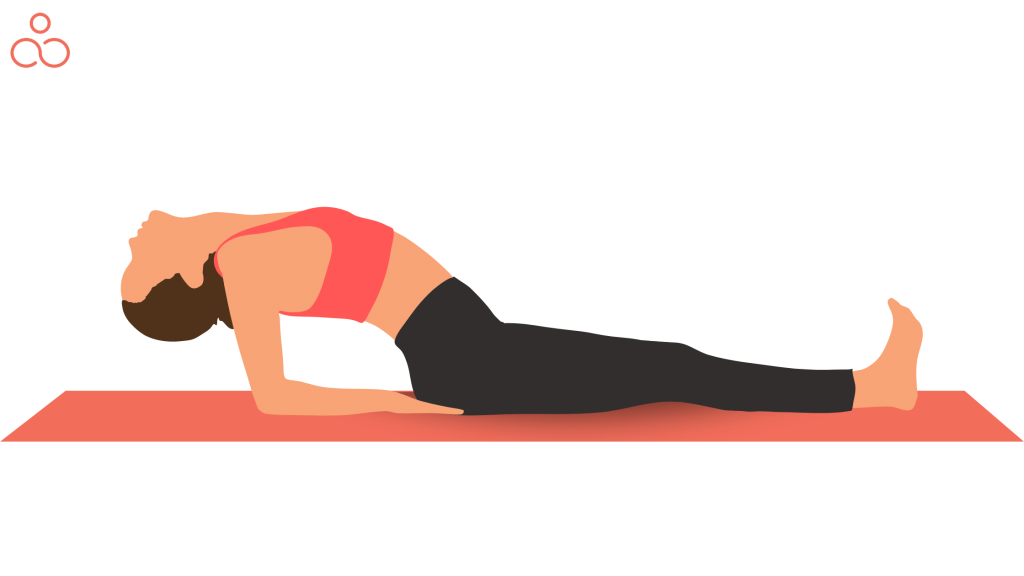
One of the more soft subsets of yoga, Yin yoga is mainly focused on exercising your joints than your muscles. It targets the connective tissues between your bones that regular asana positions do not quite reach. This means that yin yoga actively helps your joints.
Benefits of Yin Yoga
Speaking of benefits, there are many reasons why Yin yoga can be beneficial:
- Increases your body’s flexibility and range of motion
- Strengthens your ligaments, reducing the risk of injuries
- Stimulates your nervous system
- Decreases anxiety and stress levels
- Reduces pain
- And many more!
As you can see, there are plenty of reasons to give Yin Yoga a go, but it still can be overwhelming to know where to start. If you’d like to know how to start, read on.
Yin Yoga Poses For Beginners
There are different levels of Yin poses and it can be hard to know which one to start with. Here are some of the yin yoga poses that are the easiest to start with:
Boundle Angle Pose or Butterfly Pose (Baddha Konasana)
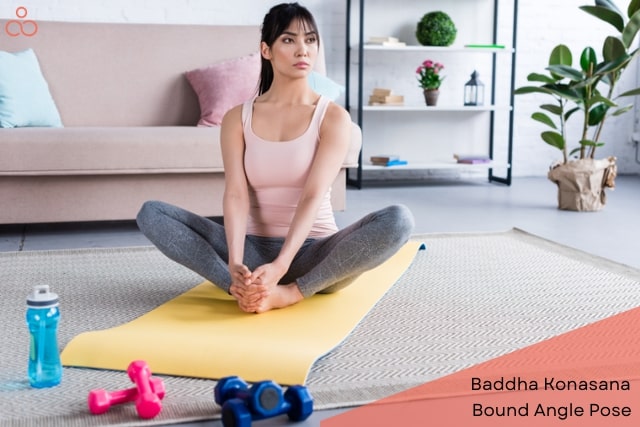
This simple beginner’s pose is used to stretch your back, abductor muscles, and hamstrings. It’s also known to help your kidneys and regulate periods in those with uteruses.
To start this pose, sit down on the floor. Bring the soles of your feet together and slowly slide your feet forward until you are in a comfortable position. Your legs should make a diamond shape.
You then slowly trace down your legs with your hands, bending at the waist. Your head should hang as you lean forward, only going as far as you are comfortable. Stay there anywhere between 3 to 5 minutes before slowly sitting up.
Reclined Spinal Twist (Supta Matsyendrasana)
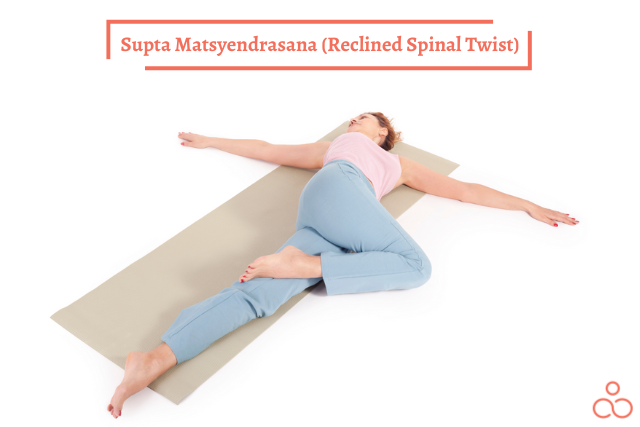
The Reclined Spinal Twist is known for releasing tension in the spine and aiding with digestion. Here is how you can do it.
Lay flat on your back with your legs flush with the ground. Position your hips to the side, aiming to get both knees on the right side of your body while your shoulders remain in contact with the floor.
You can either extend your arms above your head or in a horizontal line. You hold this pose for 3 to 5 minutes before rotating your legs to the left, doing the same on that side.
Banana Pose (Bananasana)
Also known as the Restorative Half Moon Phase, the Banana Pose is known to stretch the fascia and activate the IT band.
To begin the banana pose, lay flat on your back and extend your arms above your head holding onto your elbows. While keeping your pelvis on the floor, move your legs and upper half of your body to the right side to make a crescent shape. Hold this for the standard 3 to 5 minutes before switching sides.
You can even modify this position in two ways. If you want to get a deeper stretch you can cross your ankles. This will deepen the stretch on the side of your torso and stimulate the IT band.
The second modification is used if you feel tingling or any tension in your shoulders. Straighten your arms above your head and stack your palms if this occurs. This should stop the tingling and tension.
Lizard Pose (Utthan Pristhasana)
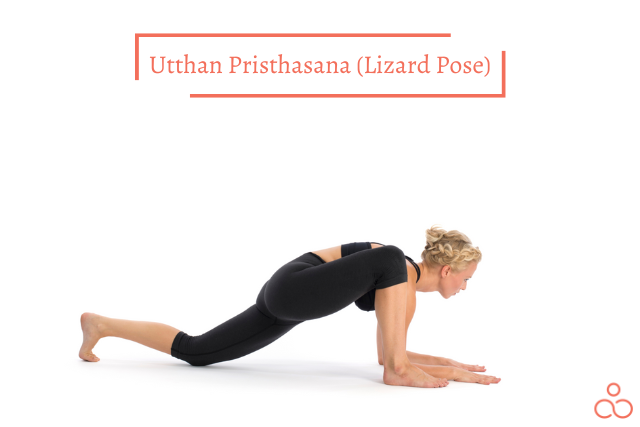
Also known as the Dragon Pose, Utthan Pristhasana is used to open your hips and groin and stretch your quadriceps. This pose is also known to relieve pain from sciatica.
To begin, get down on your hands and knees. Lift your right leg and place it between your hands, which should be a shoulder-width apart. Move your left leg back however far is comfortable while looking up. This should be held for 3 to 5 minutes before switching the positions of your legs.
There are some tips and modifications that come with this pose. If you need to relieve pressure around your back knee, place a small blanket or pillow underneath it. It will also help if you have sensitive knees.
If you cannot reach the ground, you can use blocks; they keep your hands off the ground, while still lowering yourself onto your knee.
Corpse Pose (Savasana)
This pose allows you to relax fully and relieve tension/stress in your mind. The Corpse pose is very easy for beginners and has a lot of medical benefits too.
Lay flat on your back to start this pose. Stretch your legs and let them be separated slightly. Rest your feet on the floor. There is no recommended time to hold this pose, so close your eyes and focus on relaxing every muscle in your body.
If you experience tension in your spine, place a rolled blanket or pillow underneath you to relieve it.
Seated Forward Bend Pose or Caterpillar Pose (Paschimottanasana)
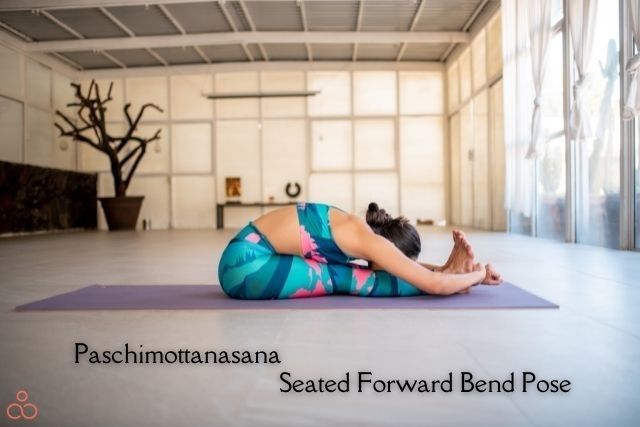
The Caterpillar pose, also known as the Seated Forward Fold Pose, can stimulate your kidneys and digestive system. The pose focuses on stretching the back of your legs and spine.
Start this pose by sitting down with your legs stretched out in front of you. Lean forward at the waist, tracing down your legs with your hands. Go as far as you are comfortable with, but the end goal is to be able to hold the arches of your feet.
Once you lean forward as far as you can, hold the pose for 3 to 5 minutes; recognize to take deep breaths and listen to your body. If you feel a tightness in your thighs, place a blanket under your knees. If there is any pain in your spine, try to elevate your hips by sitting on a bolster.
Child’s Pose (Balasana)
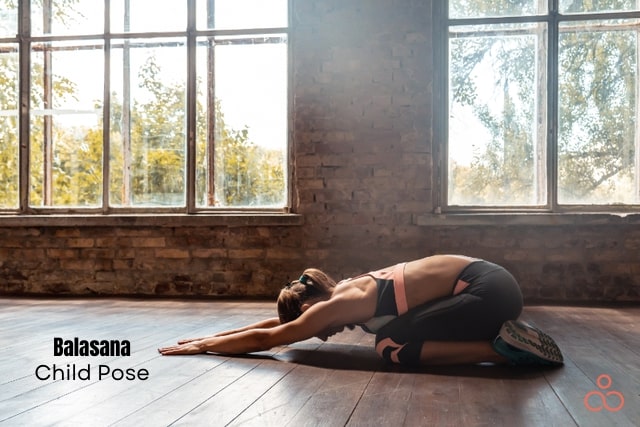
One of the most popular Yin yoga poses, the child pose relieves neck and back pain, relaxes you, aids the digestive system, and stimulates the nervous system.
To do the Child’s pose, start on your hands and knees. Place your knees in a wide stance before slowly lowering yourself to the ground. Rest your forehead on the ground and stretch your arm out in front of your head. Hold this pose for 3 to 5 minutes before slowly getting up.
FAQ’s
Is Yin Yoga the right choice for beginners?
Yin Yoga is definitely one of the best gentle yoga variants that is beginner-friendly. You might find it calm and soothing but at the same time the long holds in each pose could be quite challenging if you have never done yoga before.
What are the benefits of Yin Yoga?
Yin-Yoga looks very still and you might have a question on what good it can be for you. But believe it or not this gentle yoga form can do wonders inside your body. Some of the benefits include:
- Alleviating stress
- Connecting with your inner self
- Improving flexibility
- Reducing tension
- Restoring energy levels
- Boosting circulation
- Helping gain endurance and more
Who should avoid Yin Yoga practice?
Yin Yoga practice is a variation of yoga where the poses are held for longer durations so as to reap the maximum benefits with it. If you are a person who has low bone density or if you are suffering from Osteoporosis or Osteopenia then you must strictly avoid this practice. If you are pregnant then you must consult your gynecologist before commencing the practice. Pain, discomfort and irritations caused while holding poses could be a warning for you to stop immediately, so please pay caution.
Can Yin Yoga also work at an emotional level?
Yes, yoga in itself is a union of both mind and body and all variants of yoga work at both the levels parallely. While some might experience emotional calmness much sooner, some might just take their own sweet time to settle. Yin Yoga is no exception, and hence it also helps you to remove your emotional blockages and release the trapped emotions through the moments of stillness in poses.
Can I choose Yin Yoga for weight loss?
Ideally no, as it might take longer than any other form of yoga and it could be demotivating after a certain period. Just like other yoga variants the yin yoga also burns calories and could eventually give you the desired results but the pace is extremely slow.
Conclusion
When starting your yoga practice, Yin poses are some of the best places to start. The low-demand exercise makes it easy to get into the positions, but the long pauses allow for a bit of a challenge. Remember to always listen to your body. If you feel uncomfortable or in pain, stop immediately. This likely means you are doing something wrong. You can seriously injure your body if you push yourself too far, to the point where you may need surgery to fix it. Slowly work your way up, there’s no need to rush.

